Pinworms In Horses – A Pain In The Bum
Arrrrgh, could it be pinworms?
Your horse has scratched his bottom so much that the head of his tail is bald! This is a disaster!
The likely problem in a horse with an itchy bottom is pinworms.
Pinworms in horses is a very common problem and without using an appropriate anthelmintic treatment <strong>and</strong> management of the environment they are very hard to get rid of and will continue to cause irritation, pain and discomfort for your horse.
In this article we explain:
- the lifecycle of equine pinworms
- treatment of an infected horse
- how to get rid of pinworms in the horse and the environment – for good!
We can be thankful that pinworms don’t cause ill-health per sae, however, they do cause extreme irritation that results in scratching and rubbing that can result in hair loss and painful skin lesions.
What Is The Pinworm Lifecycle?
Pinworms are more likely to be a problem in young horses as opposed to adult horses, although horses of any age can be affected.
Pinworms in horses are caused by a parasite called Oxyuris equi.
The lifecycle of ms in horses is a little different to other intestinal worms.
It’s important to understand the lifecycle so that appropriate equine pinworm treatment can be given.
The key differences with the life cycle are:
- It’s direct, meaning that there are no intermediate hosts and no migration through other organs occurs.
- It’s long, it takes 5 months for a pinworm to develop from egg to an adult worm capable of reproduction. Unlike other worms whose life cycle is around 3 weeks.
- Adult worms live in the rectum of the horse while other intestinal worms live in the colon or small intestine.
- Adult females will exit the rectum and lay eggs around the anus of the horse. In contrast, other female worms lay their eggs within the intestines and those eggs pass into the environment via faeces.
After fertilization, the female migrates to the anus of the horse and lays her eggs in a gelatinous material in clumps on the skin around the anus.
The clinical signs associated with pinworms are related to this movement of adult worms that causes intense irritation.
After laying her eggs females pass out of the anus and die.
Larval Stage
Larval development takes place inside the egg and is quite rapid, taking only 3 to 5 days.
The third larval stage (egg + L3) is the infective stage.
These infect the horse when the horse licks them off a surface and ingests them.
Once ingested, the larvae (L3) travel to the small intestine where they hatch and then pass into the large intestine.
In the large intestine, the larvae enter crypts of the caecum and colon then moult into fourth stage larvae (L4). This takes about 8-10 days after being ingested.
Adult Stage
A final moult into immature adults takes place about 45 to 60 days after infection.
The adults mature for a further 100 days until they reproduce.
It can take anywhere from 139-156 days for females to lay their eggs after initially infecting the horse.
Signs Of Pinworms In Horses
Video Credit: roos_worldd
The most common sign that a horse has pinworms is that they love to scratch their bottom.
Horses with pinworms will often scratch so badly that they remove the hair from the base of their tail. It can be nasty!
The main signs of pinworms in horses are:
- intensely itchy rump and tail head
- broken hair, bare hairless patches of skin on the tail head and rump
- inflamed skin with possible infection around the rump and tail head
- restlessness
- loss of condition
- dull staring coat
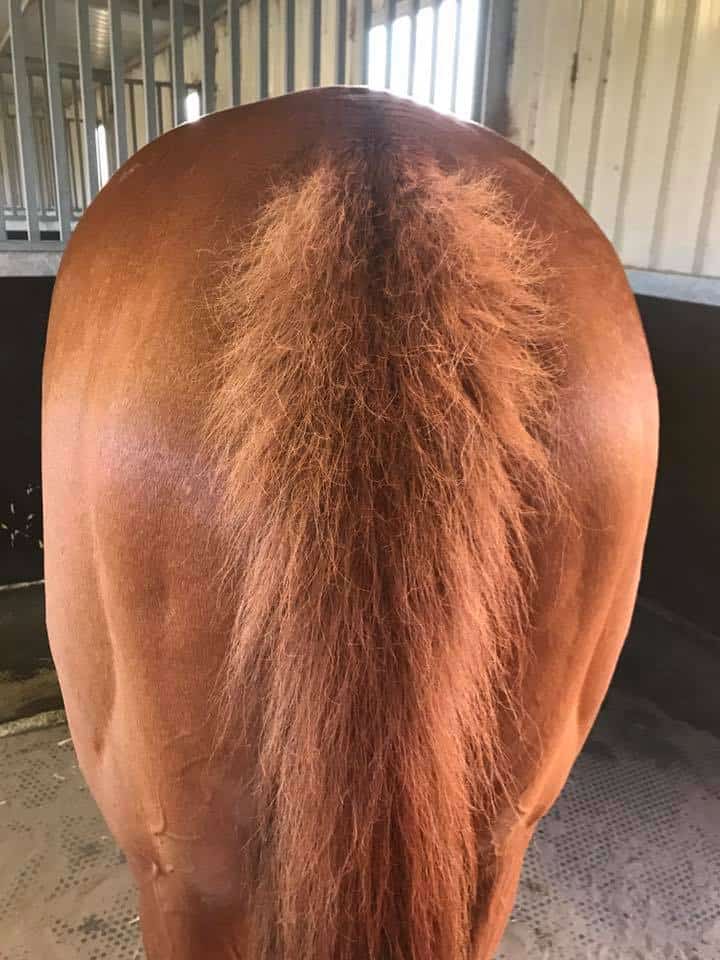 A rubbed tail is a clue that your horse might have pinworms
A rubbed tail is a clue that your horse might have pinworms
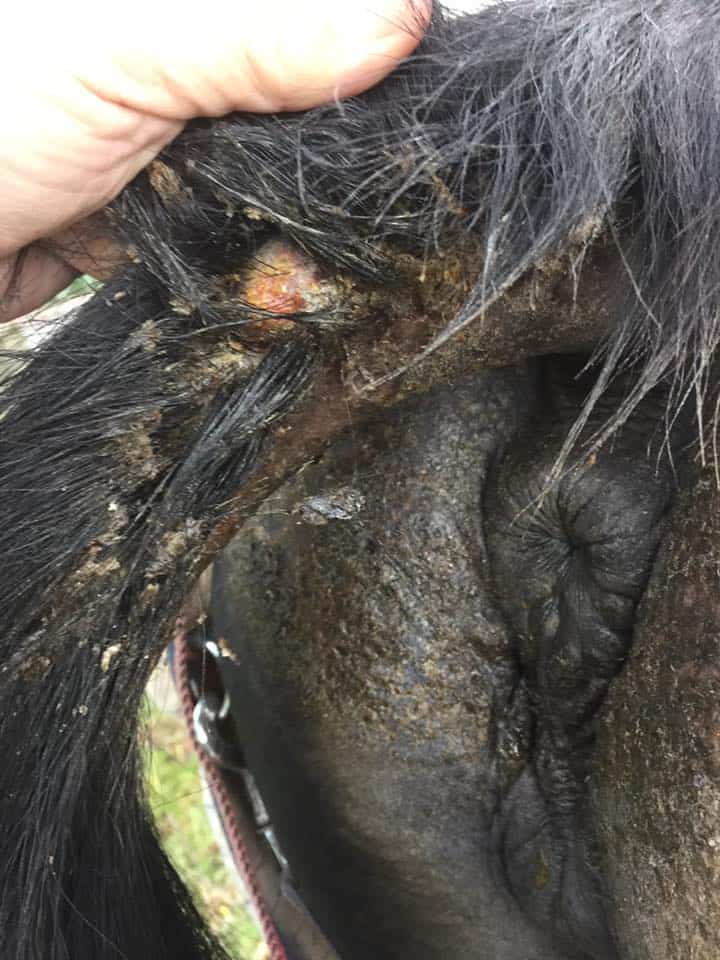 Severe itching can cause skin lesions
Severe itching can cause skin lesions
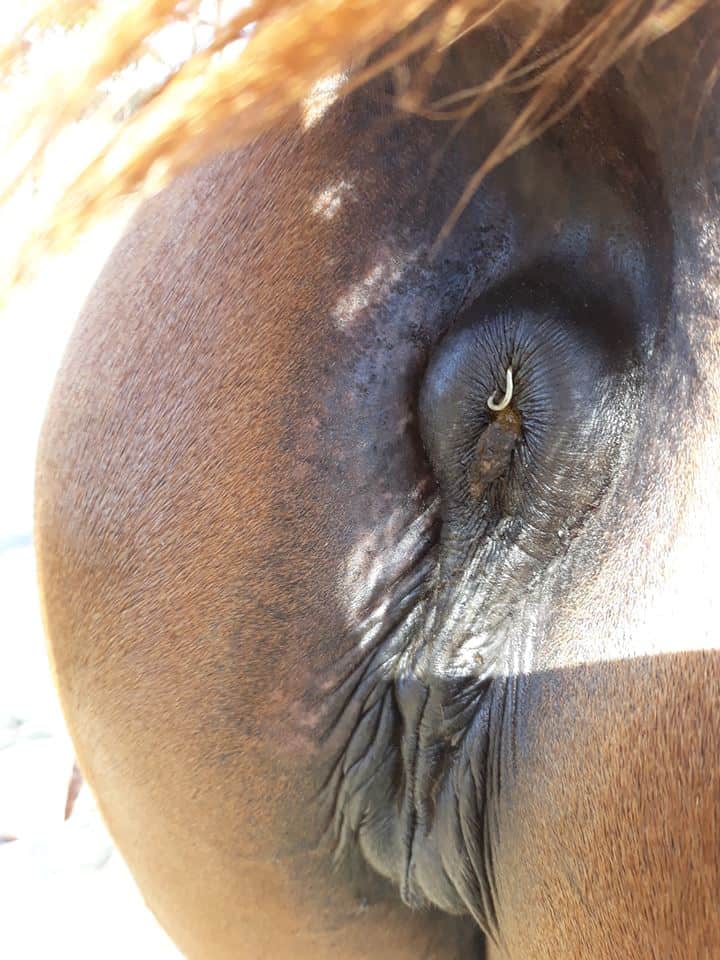 Adult pinworms can sometimes be seen in the perianal region
Adult pinworms can sometimes be seen in the perianal region
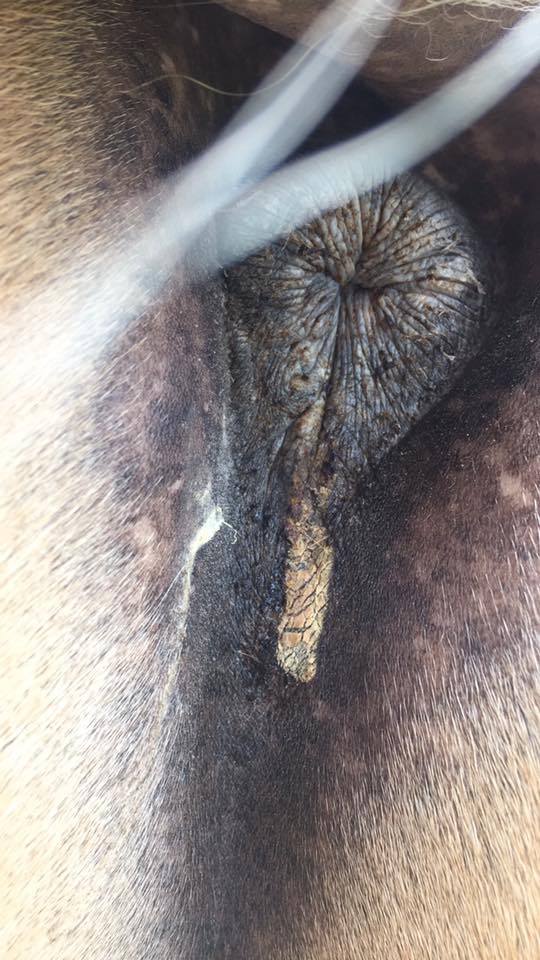 Female pinworms lay eggs in a yellow, sticky, gelatinous substance.
Female pinworms lay eggs in a yellow, sticky, gelatinous substance.
A rubbed tail is a clue that your horse might have pinworms. The severe itch can cause skin lesions from self-mutilation.
Adult worms can sometimes be seen in the perianal region.
Female pinworms lay eggs in a yellow, sticky, gelatinous substance that can often be seen around the rectum.
Diagnosis Of Pinworms In Horses
As we mentioned above, pinworm eggs are not found in faeces like other worm eggs. Therefore, we need to check for these worms by other means!
The common signs described above provide us with a good hint that the horse might have pinworms.
Check around the anus and look for the gelatinous substance that contains the eggs.
Use sticky tape to remove this substance and send it to your vet for them to look under the microscope for evidence of eggs.
It is uncommon to see adult worms because they are usually only active at night.
If you do see the female worm she will likely be located around the anus or in a dung pile. Adult worms are about 1 to 3cm in length. (See picture above).
How To Get Rid Of Pinworms: Treatment
The key to pinworm treatment is to combine appropriate management and hygiene with an effective parasitic wormer.
Management & Hygiene
Pinworm infections are spread when your horse ingests eggs/larvae that have contaminated surfaces.
Once environmental contamination has occurred these worms can be tough to eradicate. You need to ensure you practice good hygiene.
It is therefore vitally important to disinfect and clean any area that the contaminated horse has contact with: fence posts, stable doors, covers, feed/water bins and grooming equipment.
Clean your horses’ perianal, tail and dock area using disposable wipes, not sponges. Throw out the wipe after cleaning. In fact, burn it.
Adult females usually lay their eggs at night, so try to wash your horses’ bottom in the morning.
You can try applying vaseline or petroleum jelly around the perianal area. This will aid in cleaning the eggs off your horse.
What Wormer Kills Pinworms In Horses?
Unfortunately, the development of resistance to anthelmintics is a major issue with many worm species and pinworms aren’t exempt.
For that reason it is important that you don’t use a broad-spectrum horse worming paste, instead, you use a targeted treatment strategy.
For many horse properties, ivermectin isn’t effective in eliminating pinworm infections.
The most effective anthelmintic active ingredients that you need to use to eradicate pinworm are pyrantel and fenbendazole. This could change over time.
The number of treatments required really depends on individual circumstances. Contact one of our vets for assistance in working out an appropriate worming strategy.
Have you had a problem with pinworm on your property? In the comments section below, tell us what worked best for you to eradicate this problem.
- 23
- 23


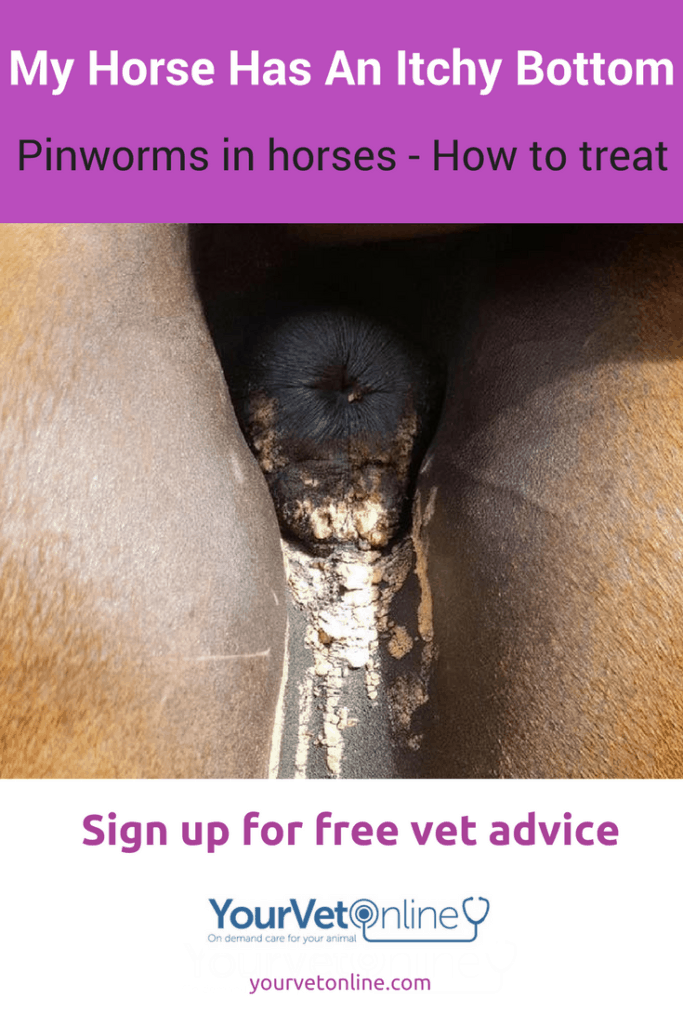
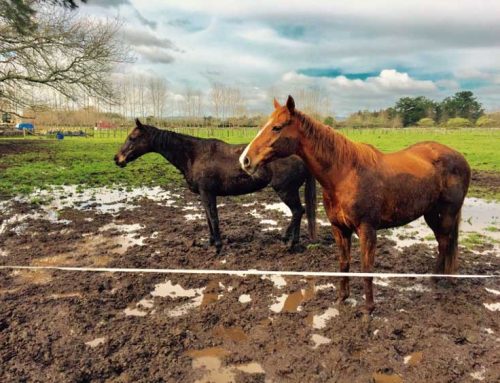
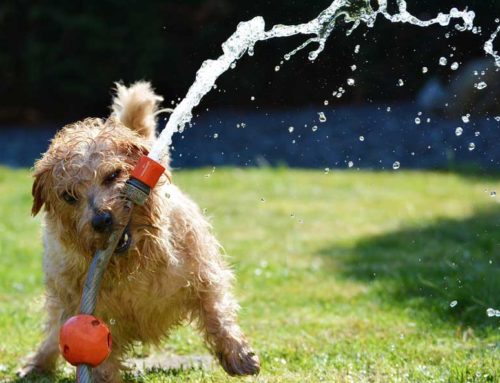

My horse has pen worms how do I treat this and what is the best treatment for this thanks